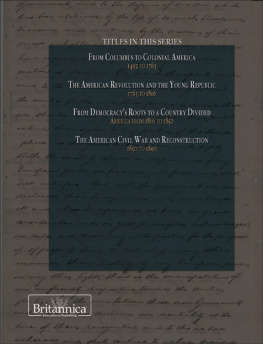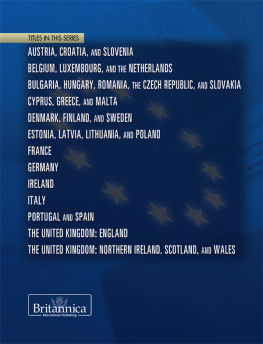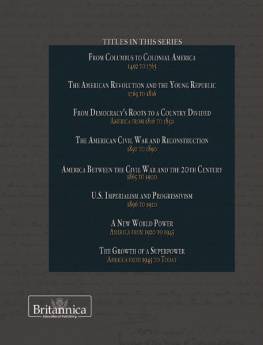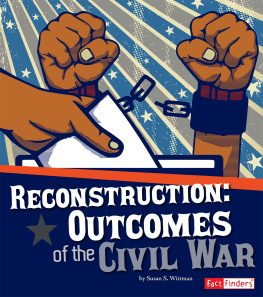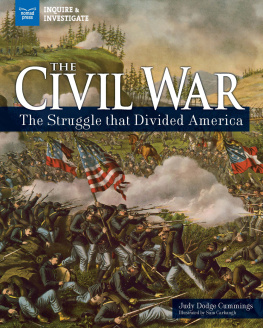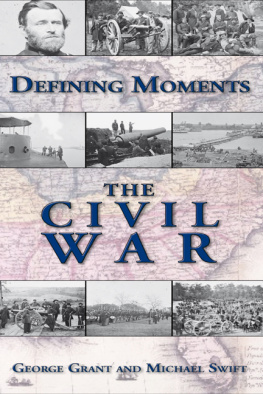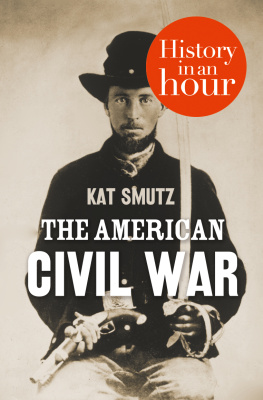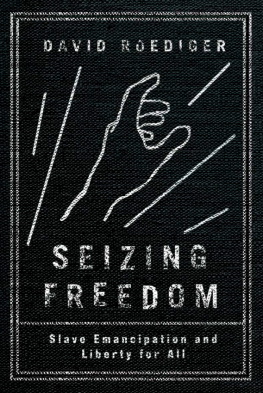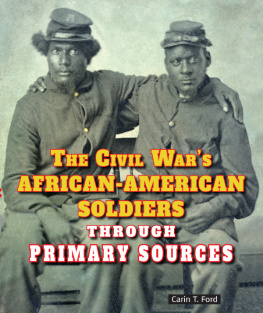THE AMERICAN CIVIL WAR AND RECONSTRUCTION: 1850 to 1890
DOCUMENTING AMERICA
THE PRIMARY SOURCE DOCUMENTS OF A NATION
THE AMERICAN CIVIL WAR AND RECONSTRUCTION: 1850 to 1890
EDITED BY JEFF WALLENFELDT, MANAGER, GEOGRAPHY AND HISTORY

Published in 2012 by Britannica Educational Publishing
(a trademark of Encyclopdia Britannica, Inc.)
in association with Rosen Educational Services, LLC
29 East 21st Street, New York, NY 10010.
Copyright 2012 Encyclopdia Britannica, Inc. Britannica, Encyclopdia Britannica, and the Thistle logo are registered trademarks of Encyclopdia Britannica, Inc. All rights reserved.
Rosen Educational Services materials copyright 2012 Rosen Educational Services, LLC.
All rights reserved.
Distributed exclusively by Rosen Educational Services.
For a listing of additional Britannica Educational Publishing titles, call toll free (800) 237-9932.
First Edition
Britannica Educational Publishing
Michael I. Levy: Executive Editor
Adam Augustyn: Assistant Manager, Encyclopdia Britannica
Marilyn L. Barton: Senior Coordinator, Production Control
Steven Bosco: Director, Editorial Technologies
Lisa S. Braucher: Senior Producer and Data Editor
Yvette Charboneau: Senior Copy Editor
Kathy Nakamura: Manager, Media Acquisition
Jeff Wallenfeldt: Manager, Geography and History
Rosen Educational Services
Hope Lourie Killcoyne: Executive Editor
Nelson S: Art Director
Cindy Reiman: Photography Manager
Matthew Cauli: Cover Design
Brian Garvey: Designer
Introduction by Jeff Wallenfeldt
Library of Congress Cataloging-in-Publication Data
The American Civil War and Reconstruction: 1850 to 1890/edited by Jeff Wallenfeldt.1st ed.
p. cm.(Documenting America: the primary source documents of a nation)
In association with Britannica Educational Publishing, Rosen Educational Services.
Includes bibliographical references and index.
ISBN 978-1-61530-711-1 (eBook)
1. United StatesHistoryCivil War, 1861-1865Sources. 2. Reconstruction (U.S. history,
1865-1877)Sources. 3. United StatesHistory1849-1877Sources. I. Wallenfeldt, Jeffrey H.
E464.A415 2012
973.7dc23
2011026695
On the : The Battle of Gettysburg in July 1863 was a major defeat for Confederate Gen. Robert E. Lee; thereafter the war turned in favour of the Union. MPI/Archive Photos/Getty Images. Emancipation Proclamation. General Records of the U.S. Government, Natural Archives, Washington, D.C.
On pages : Oil on canvas portrait of Abraham Lincoln by George Healy, 1887. Katherine Young/Hulton Archive/Getty Images
On pages : President Lincoln and his Cabinet at the signing of the Emancipation Proclamation, which declared that slaves in Southern states would be thenceforward, and forever, free. MPI/Archive Photos/Getty Images
CONTENTS


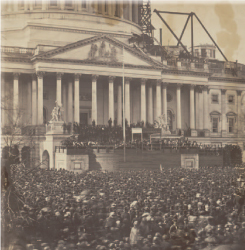

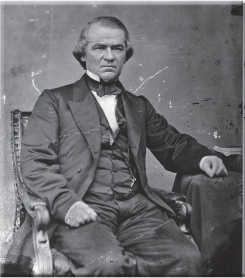
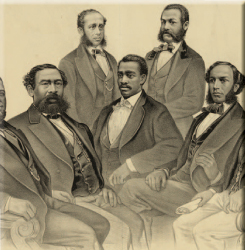

INTRODUCTION

A house divided cannot stand.
The better angels of our nature.
A government of the people, by
the people and for the people
shall not perish from the earth.
T hese statements are the much-noted and long-remembered words of Abraham Lincoln, the 16th president of the United States, the unconventionally majestic figure who towers still over the era of the American Civil War. Unschooled, though anything but unlettered, the shrewdest of country bumpkins, Lincoln conveyed his boundless compassion and moral authority in a rhetorical eloquence fashioned from the works of William Shakespeare, the Bible, and hundreds of spellbinding tales told on the Illinois court circuit by an ungainly, often melancholy lawyer who came to life and lifted spirits as a storyteller.
There is no better place to begin than Lincolns words to try to come to grips with this period of American history that continues to send aftershocks into the 21st century. This volume provides several opportunities to listen closely to Lincoln. Yet as elegant and influential as Lincolns speeches and writing were, his was but one voice in the conflict that tore the United States in two. Equally telling are the words of Lincolns allies and adversaries, as well as those of Americans, famous and not so famous, who preceded and followed his relatively short appearance on the stage of 19th century history, playing their own important roles in the American saga. Then, as now, those with the ability to move people with their oration possessed great power. This volume uses some of the eras most memorable speeches to take the reader deep into the issues and events surrounding the Civil War and Reconstruction, but it also employs a selection of legislation, legal documents, letters, poetry, fiction, and lyrics to further illustrate the moment. A narrative, offering description and analysis, guides the reader through the period and provides a framework for exploring the primary source documents. When these documents are short, they are presented whole within the narrative; more often, excerpts are provided that give a flavour of the document, which is presented more fully in the Appendix.
What is to be done about slavery? That question, asked since the founding of the United States, had heated up several times on the way to reaching the boiling point in the 1850s. In the early days of the republic, slaves toiled throughout the country, but by mid-century slavery had been abolished in the North, while in the South the peculiar institution, as it was euphemistically referred to, had become ever more important to the regions economy and way of life. The Missouri Compromise of 1820 and the Compromise of 1850 had placated the contending factions, maintaining the balance of political power between the slave and non-slave states and carefully delineating where slavery could be practiced and where it could not in the new territories acquired by the country.
But in the 1850s, as the abolition movement began to gain steamfuelled by Harriet Beecher Stowes evocative depiction of the cruelty of slavery in her novel Uncle Toms Cabin (1853)the matter of the extension of slavery in the West was again centre stage. Stephen Douglas, a Democratic senator from Illinois, shepherded through Congress the Kansas-Nebraska Act (1854), making popular sovereignty the law of the land, by which the residents of the new territories would decide themselves whether to permit slavery. In Bleeding Kansas the contest between advocates and opponents of slavery erupted into open warfare. Responding to what he saw as the consummation of The Crime Against Kansas, Sen. Charles Sumner of Massachusetts, an ardent abolitionist, said, Slavery now stands erect, clanking its chains on the territory of Kansas, surrounded by a code of death, and trampling upon all cherished liberties, whether of speech, the press, the bar, the trial by jury, or the electoral franchise. So outraged by the speech from which these remarks were taken was Rep. Preston S. Brooks of South Carolina that he attacked Sumner with a cane on the Senate floor.
Next page
